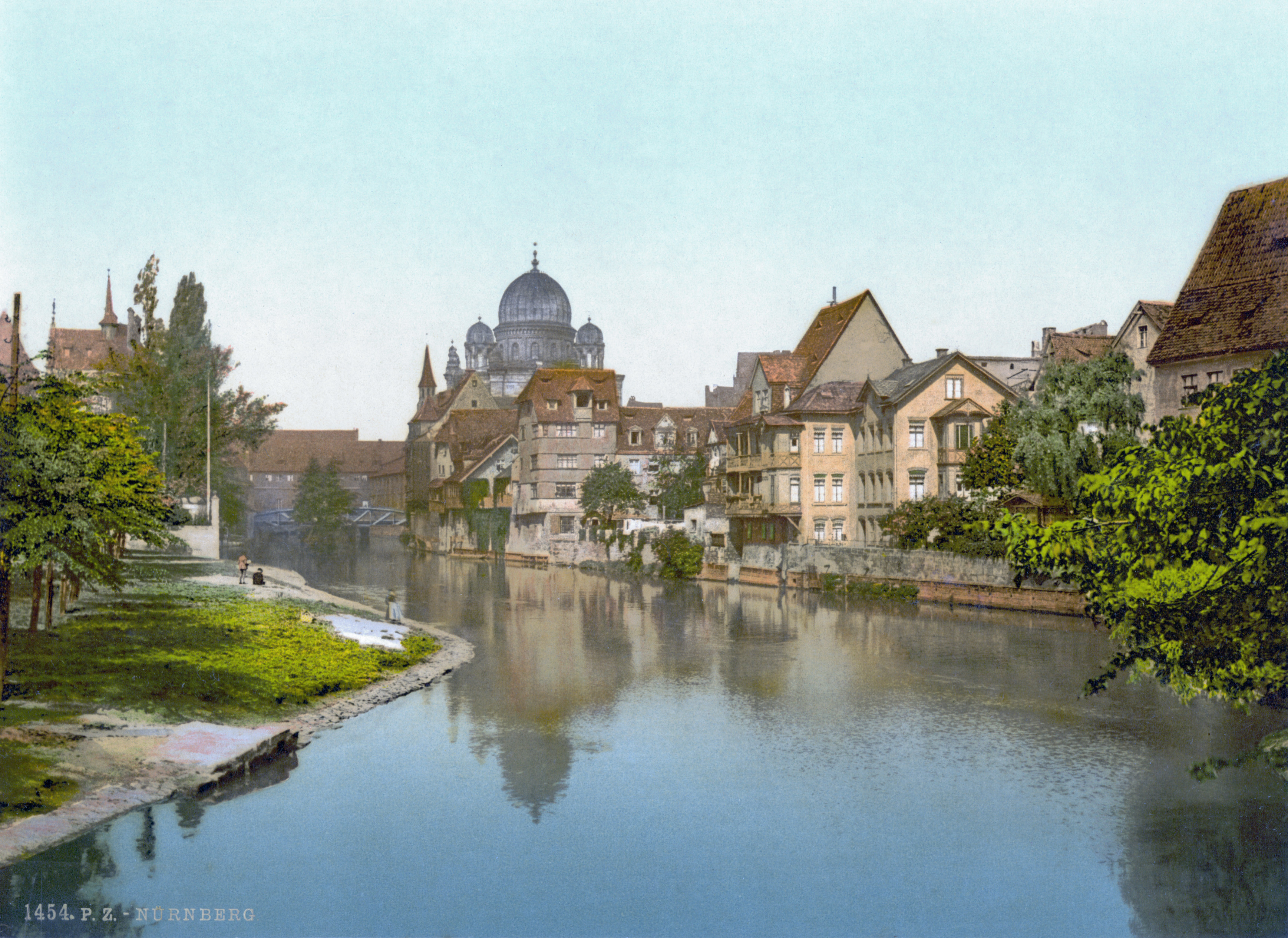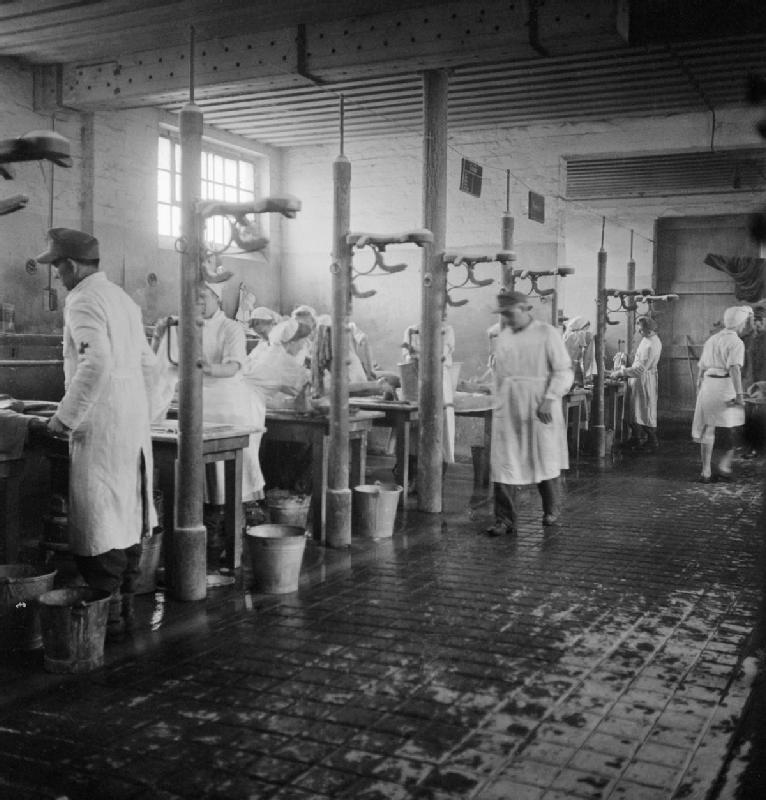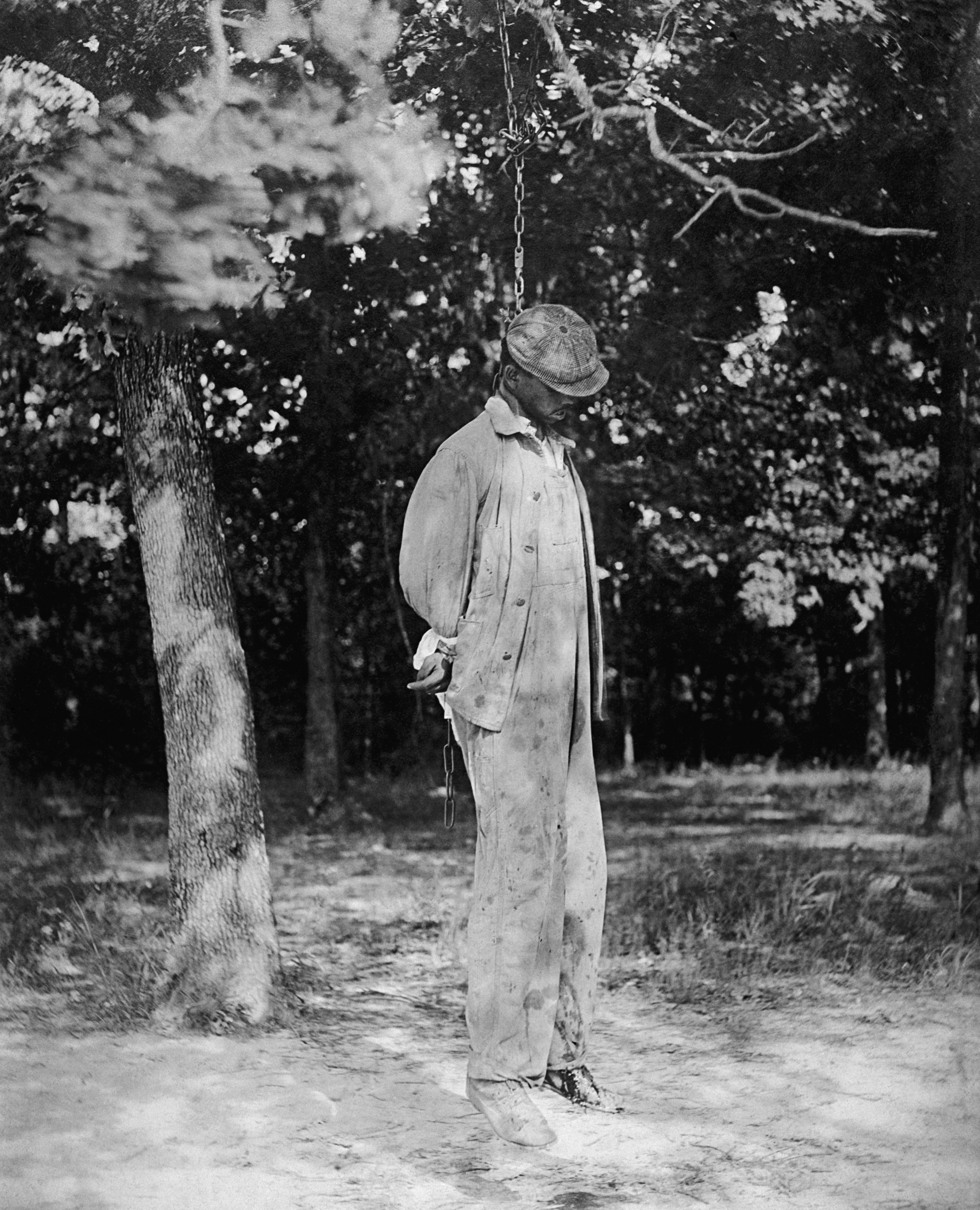|
Blockältester
A kapo was a type of prisoner functionary () at a Nazi concentration or extermination camp. They were, whether voluntary or coerced, collaborators who worked under the ''Schutzstaffel'' (SS) to carry out administrative tasks or supervise the forced labour of inmates. In addition to being given authority over their fellow prisoners, they would often enjoy comparatively better conditions at the camps, such as increased food rations or less physical brutality from SS guards. Due to their privileged status and actions, kapos were highly resented and were frequently lynched by other prisoners when the camps were liberated by the Allies over the course of World War II. In the aftermath of World War II, there were many instances of kapos being prosecuted alongside Nazis for their role at the camps. Most notably, the Nazis and Nazi Collaborators (Punishment) Law, which was passed by the State of Israel in 1950, was primarily aimed at providing a framework for prosecution of Jews who ... [...More Info...] [...Related Items...] OR: [Wikipedia] [Google] [Baidu] |
Prisoner Functionaries
In Nazi concentration and labor camps the system of Funktionshäftlinge (singular: Funktionshäftling), or prisoner functionaries was developed. These were the prisoners with certain duties of supervision of over fellow prisoners assisting the camp administration and guards (''SS-Totenkopfverbände''), in exchange for various privileges. These should be distinguished from various work units known as ''Sonderkommando'' (not to be confused with the ''SS-Sonderkommandos''). Of these, best known are '' Kapos''. The system was introduced in early Nazi camps of 1933-1934. An estimated 10% of the Nazi camp population were Funktionshäftlinge. The position of Funktionshäftlinge was controversial in many respects. Their life was easier, but they were hated by others. Further, they were split in their motivations for choosing this work: some of them were true agents of the SS or enjoyed the vested power, while others used their position to help the survival of other prisoners (often prior ... [...More Info...] [...Related Items...] OR: [Wikipedia] [Google] [Baidu] |
Nazi Germany
Nazi Germany, officially known as the German Reich and later the Greater German Reich, was the German Reich, German state between 1933 and 1945, when Adolf Hitler and the Nazi Party controlled the country, transforming it into a Totalitarianism, totalitarian dictatorship. The Third Reich, meaning "Third Realm" or "Third Empire", referred to the Nazi claim that Nazi Germany was the successor to the earlier Holy Roman Empire (800–1806) and German Empire (1871–1918). The Third Reich, which the Nazis referred to as the Thousand-Year Reich, ended in May 1945, after 12 years, when the Allies of World War II, Allies defeated Germany and entered the capital, Berlin, End of World War II in Europe, ending World War II in Europe. After Hitler was appointed Chancellor of Germany in 1933, the Nazi Party began to eliminate political opposition and consolidate power. A 1934 German referendum confirmed Hitler as sole ''Führer'' (leader). Power was centralised in Hitler's person, an ... [...More Info...] [...Related Items...] OR: [Wikipedia] [Google] [Baidu] |
The Holocaust
The Holocaust (), known in Hebrew language, Hebrew as the (), was the genocide of History of the Jews in Europe, European Jews during World War II. From 1941 to 1945, Nazi Germany and Collaboration with Nazi Germany and Fascist Italy, its collaborators systematically murdered some six million Jews across German-occupied Europe, around two-thirds of Europe's Jewish population. The murders were carried out primarily through mass shootings and poison gas in extermination camps, chiefly Auschwitz concentration camp#Auschwitz II-Birkenau, Auschwitz-Birkenau, Treblinka extermination camp, Treblinka, Belzec extermination camp, Belzec, Sobibor extermination camp, Sobibor, and Chełmno extermination camp, Chełmno in Occupation of Poland (1939–1945), occupied Poland. Separate Nazi persecutions killed a similar or larger number of non-Jewish civilians and prisoners of war (POWs); the term ''Holocaust'' is sometimes used to include the murder and persecution of Victims of Nazi ... [...More Info...] [...Related Items...] OR: [Wikipedia] [Google] [Baidu] |
Stutthof Concentration Camp
Stutthof was a Nazi concentration camp established by Nazi Germany in a secluded, marshy, and wooded area near the village of Stutthof (now Sztutowo) 34 km (21 mi) east of the city of Danzig (Gdańsk) in the territory of the German-annexed Free City of Danzig. The camp was set up around existing structures after the invasion of Poland in World War II and initially used for the imprisonment of Polish leaders and intelligentsia. The actual barracks were built the following year by prisoners. Most of the infrastructure of the concentration camp was either destroyed or dismantled shortly after the war. In 1962, the former concentration camp with its remaining structures was turned into a memorial museum. Stutthof was the first German concentration camp set up outside German borders in World War II, in operation from 2 September 1939. It was also the last camp liberated by the Allies of World War II, Allies, on 9 May 1945. It is estimated that between 63,000 and 65,00 ... [...More Info...] [...Related Items...] OR: [Wikipedia] [Google] [Baidu] |
Poland
Poland, officially the Republic of Poland, is a country in Central Europe. It extends from the Baltic Sea in the north to the Sudetes and Carpathian Mountains in the south, bordered by Lithuania and Russia to the northeast, Belarus and Ukraine to the east, Slovakia and the Czech Republic to the south, and Germany to the west. The territory has a varied landscape, diverse ecosystems, and a temperate climate. Poland is composed of Voivodeships of Poland, sixteen voivodeships and is the fifth most populous member state of the European Union (EU), with over 38 million people, and the List of European countries by area, fifth largest EU country by area, covering . The capital and List of cities and towns in Poland, largest city is Warsaw; other major cities include Kraków, Wrocław, Łódź, Poznań, and Gdańsk. Prehistory and protohistory of Poland, Prehistoric human activity on Polish soil dates to the Lower Paleolithic, with continuous settlement since the end of the Last Gla ... [...More Info...] [...Related Items...] OR: [Wikipedia] [Google] [Baidu] |
Gdańsk
Gdańsk is a city on the Baltic Sea, Baltic coast of northern Poland, and the capital of the Pomeranian Voivodeship. With a population of 486,492, Data for territorial unit 2261000. it is Poland's sixth-largest city and principal seaport. Gdańsk lies at the mouth of the Motława River and is situated at the southern edge of Gdańsk Bay, close to the city of Gdynia and the resort town of Sopot; these form a metropolitan area called the Tricity, Poland, Tricity (''Trójmiasto''), with a population of approximately 1.5 million. The city has a complex history, having had periods of Polish, German and self rule. An important shipbuilding and trade port since the Middle Ages, between 1361 and 1500 it was a member of the Hanseatic League, which influenced its economic, demographic and #Architecture, urban landscape. It also served as Poland's principal seaport and was its largest city since the 15th century until the early 18th century when Warsaw surpassed it. With the Partition ... [...More Info...] [...Related Items...] OR: [Wikipedia] [Google] [Baidu] |
Stutthof Trials
The Stutthof trials were a series of war crime tribunals held in postwar Poland for the prosecution of Stutthof concentration camp staff and officials, responsible for the murder of up to 85,000 prisoners during the occupation of Poland by Nazi Germany in World War II.Bogdan Chrzanowski, Andrzej Gąsiorowski (Zeszyty Muzeum, 5)Załoga obozu Stutthof (Staff of Stutthof concentration camp) (PDF file, direct download 9.14 MB) p. 189 (13/40 in PDF). Muzeum Stutthof w Sztutowie. Zaklad Narodowy Imienia Ossolinskich, Wrocław, Warszawa, Krakow 1984. PL ISSN 0137-5377. None of the Stutthof commandants were ever tried in Poland. ''SS-Sturmbannführer'' Max Pauly was put on trial by a British military court in Germany but not for the crimes committed at Stutthof; only as the commandant of the Neuengamme concentration camp in Hamburg. Nevertheless, Pauly was executed in 1946. The first Polish war crimes tribunal was convened at Gdańsk, Poland, from 25 April to 31 May 1946. The next th ... [...More Info...] [...Related Items...] OR: [Wikipedia] [Google] [Baidu] |
Bergen-Belsen Concentration Camp
Bergen-Belsen (), or Belsen, was a Nazi concentration camp in what is today Lower Saxony in Northern Germany, northern Germany, southwest of the town of Bergen, Lower Saxony, Bergen near Celle. Originally established as a prisoner of war camp, in 1943, parts of it became a concentration camp. Initially this was an "exchange camp", where Jewish people, Jewish hostages were held with the intention of exchanging them for German prisoners of war held overseas. The camp was later expanded to hold Jews from other concentration camps. After 1945, the name was applied to the Bergen-Belsen DP camp, displaced persons camp established nearby, but it is most commonly associated with the concentration camp. From 1941 to 1945, almost 20,000 Soviet Union, Soviet prisoners of war and a further 50,000 inmates died there. Overcrowding, lack of food, and poor sanitary conditions caused outbreaks of typhus, tuberculosis, typhoid fever, and dysentery; leading to the deaths of more than 35,000 peopl ... [...More Info...] [...Related Items...] OR: [Wikipedia] [Google] [Baidu] |
Mittelbau-Dora Concentration Camp
Mittelbau-Dora (also Dora-Mittelbau and Nordhausen-Dora) was a Nazi concentration camp located near Nordhausen in Thuringia, Germany. It was established in late summer 1943 as a subcamp of Buchenwald concentration camp, supplying slave labour from many Eastern countries occupied by Germany (including evacuated survivors of eastern extermination camps), for extending the nearby tunnels in the Kohnstein and for manufacturing the V-2 rocket and the V-1 flying bomb. In the summer of 1944, ''Mittelbau'' became an independent concentration camp with numerous subcamps of its own. In 1945, most of the surviving inmates were sent on death marches or crammed in trains of box-cars by the SS. On 11 April 1945, US troops freed the remaining prisoners. The inmates at Dora-Mittelbau were treated in a brutal and inhumane manner, working 14-hour days and being denied access to basic hygiene, beds, and adequate rations. Around one in three of the roughly 60,000 prisoners who were sent to Dora- ... [...More Info...] [...Related Items...] OR: [Wikipedia] [Google] [Baidu] |
Lynching
Lynching is an extrajudicial killing by a group. It is most often used to characterize informal public executions by a mob in order to punish an alleged or convicted transgressor or to intimidate others. It can also be an extreme form of informal group social control, and it is often conducted with the display of a public spectacle (often in the form of a hanging) for maximum intimidation. Instances of lynchings and similar mob violence can be found in all societies. In the United States, where the word ''lynching'' likely originated, lynchings of African Americans became frequent in the South during the period after the Reconstruction era, especially during the nadir of American race relations. Etymology The origins of the word ''lynch'' are obscure, but it likely originated during the American Revolution. The verb comes from the phrase ''Lynch Law'', a term for a punishment without trial. Two Americans during this era are generally credited for coining the phrase: C ... [...More Info...] [...Related Items...] OR: [Wikipedia] [Google] [Baidu] |
The New York Times
''The New York Times'' (''NYT'') is an American daily newspaper based in New York City. ''The New York Times'' covers domestic, national, and international news, and publishes opinion pieces, investigative reports, and reviews. As one of the longest-running newspapers in the United States, the ''Times'' serves as one of the country's Newspaper of record, newspapers of record. , ''The New York Times'' had 9.13 million total and 8.83 million online subscribers, both by significant margins the List of newspapers in the United States, highest numbers for any newspaper in the United States; the total also included 296,330 print subscribers, making the ''Times'' the second-largest newspaper by print circulation in the United States, following ''The Wall Street Journal'', also based in New York City. ''The New York Times'' is published by the New York Times Company; since 1896, the company has been chaired by the Ochs-Sulzberger family, whose current chairman and the paper's publ ... [...More Info...] [...Related Items...] OR: [Wikipedia] [Google] [Baidu] |
Robert D
The name Robert is an ancient Germanic given name, from Proto-Germanic "fame" and "bright" (''Hrōþiberhtaz''). Compare Old Dutch ''Robrecht'' and Old High German ''Hrodebert'' (a compound of '' Hruod'' () "fame, glory, honour, praise, renown, godlike" and ''berht'' "bright, light, shining"). It is the second most frequently used given name of ancient Germanic origin.Reaney & Wilson, 1997. ''Dictionary of English Surnames''. Oxford University Press. It is also in use as a surname. Another commonly used form of the name is Rupert. After becoming widely used in Continental Europe, the name entered England in its Old French form ''Robert'', where an Old English cognate form (''Hrēodbēorht'', ''Hrodberht'', ''Hrēodbēorð'', ''Hrœdbœrð'', ''Hrœdberð'', ''Hrōðberχtŕ'') had existed before the Norman Conquest. The feminine version is Roberta. The Italian, Portuguese, and Spanish form is Roberto. Robert is also a common name in many Germanic languages, including En ... [...More Info...] [...Related Items...] OR: [Wikipedia] [Google] [Baidu] |








